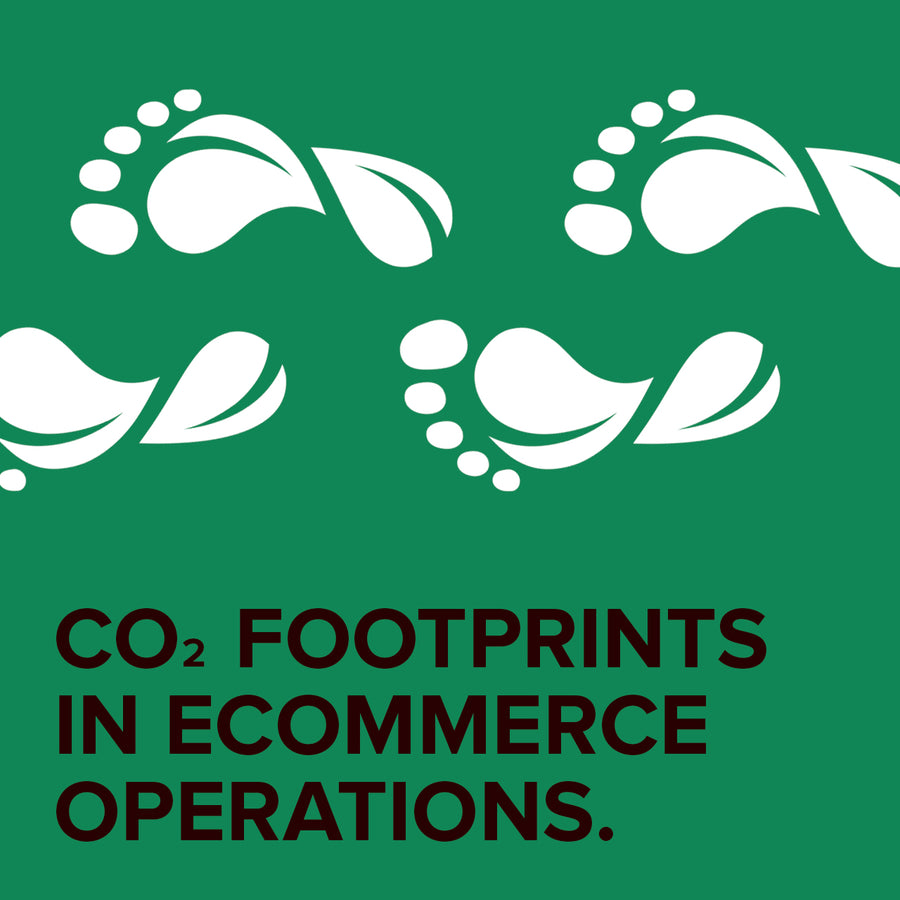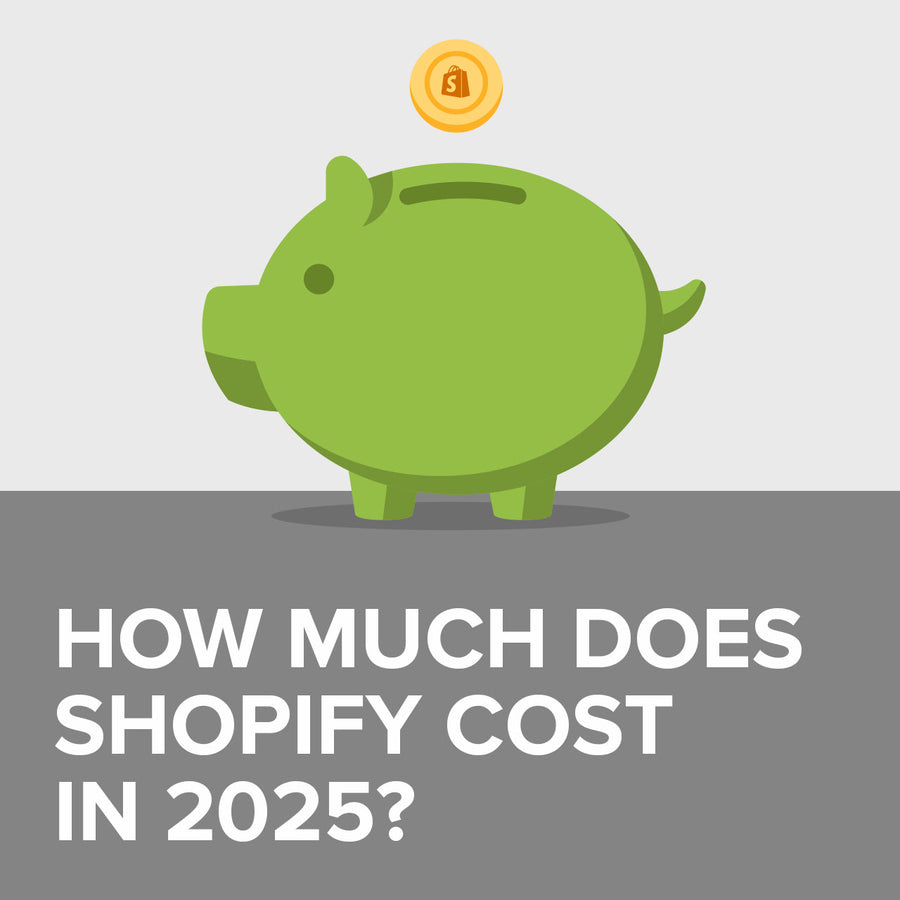Reducing Carbon Footprints in eCommerce Operations
26 April 2024

Want to make your eCommerce business more sustainable? Discover practical strategies to reduce your carbon footprint, from greener packaging to smarter shipping and everything in between.
eCommerce has revolutionised the way we shop. The convenience of buying everything from clothes to groceries at the click of a button is undeniably appealing. However, this ease comes with a hidden cost – the environmental impact. Packaging materials, constant shipping, and the ease of returns all contribute to a significant carbon footprint within the eCommerce industry. As consumers and businesses, we have a responsibility to make a change. Reducing our carbon footprint in eCommerce is crucial for creating a more sustainable future.
The Carbon Footprint of eCommerce
So, what exactly is a carbon footprint? It's the total amount of greenhouse gases, like carbon dioxide, that are released because of our activities. In the case of eCommerce, it encompasses everything from the production of goods to their delivery to your doorstep. Let's explore some of the key areas where eCommerce impacts the environment:
- Packaging: The boxes, bubble wrap, and plastic fillers used to protect products during shipping contribute heavily to waste. Much of this packaging ends up in landfills, polluting the environment.
- Transportation: The constant movement of goods through planes, ships, and delivery trucks burns fossil fuels, releasing harmful emissions into the atmosphere.
- Returns: Easy returns policies can lead to over-purchasing. The transportation required to process these returns adds to the overall carbon footprint.
- Data Centres: eCommerce relies heavily on massive data centres that store and process information. These centres consume vast amounts of energy, much of which may come from non-renewable sources.
- Energy Consumption: Warehouses, offices, and other eCommerce facilities all need lighting, heating, and cooling, adding to their energy usage.
Understanding these key areas helps us identify where we can make changes to reduce the carbon footprint of eCommerce operations.
Strategies for Reducing Your Carbon Footprint
Now that we understand the sources of eCommerce emissions, let's explore solutions. Here are some impactful ways to make your operations greener:
Optimising Packaging
Sustainable materials: Choose materials that are recycled, recyclable, biodegradable, or compostable. Explore innovative options like plant-based packaging.
Right-sizing: Minimise wasted space by using boxes and packaging that fit the product snugly. This cuts down on materials and reduces shipping weight.
Greener Transportation
Carbon-neutral shipping: Partner with carriers that offer carbon offset programs or invest in electric vehicles.
Optimised delivery routes: Use route planning software to ensure efficient deliveries and reduce fuel consumption.
Customer pick-up locations: Offer convenient pick-up points to reduce last-mile delivery emissions.
Less air freight: Air freight is far more carbon-intensive than sea or ground transport. Use it sparingly for urgent deliveries only.
Minimising Returns
Clear product descriptions: Provide detailed and accurate information about your products, including sizing and features.
High-quality visuals: Use excellent photos and videos to give customers a realistic understanding of the product.
Customer support: Offer pre-sales support to answer questions and help customers make informed buying decisions.
Sustainable Warehousing and Operations
Renewable energy: Invest in solar panels or wind turbines to power your facilities.
Energy efficiency: Use energy-efficient lighting (like LEDs) and appliances. Implement smart energy management systems.
Waste reduction: Recycle, reuse, and compost waste materials wherever possible.
Additional Considerations
Beyond the core strategies, here are some further steps to consider in your journey towards reducing your eCommerce carbon footprint:
- Tracking and Measuring Carbon Emissions: It's the adage "what gets measured, gets managed." Use carbon accounting tools to understand where your biggest emissions hotspots lie, enabling you to focus your efforts effectively.
- Offsetting Emissions Through Carbon Credits: While reducing emissions is paramount, carbon credits can be a way to compensate for unavoidable emissions. Invest in projects that support renewable energy or reforestation to offset your remaining footprint.
- Partnering with Sustainable Suppliers: Work with manufacturers and suppliers who share your commitment to sustainability. Look for those who use eco-friendly materials, minimise waste, and have responsible production practices.
- Educating Customers About Eco-Friendly Practices: Empower your customers to make informed choices. Highlight your sustainability initiatives on your website and product pages. Encourage them to opt for eco-friendly shipping options and provide information about recycling or reusing your packaging.
Conclusion
Reducing your eCommerce carbon footprint isn't just good for the planet—it's good for business. A commitment to sustainability can attract environmentally conscious customers, boost your brand reputation, and even reduce operational costs. While the journey to true sustainability requires ongoing effort, the benefits are undeniable.
We have the power to reshape the future of eCommerce. Let's all act, whether as business owners or consumers. By choosing eco-friendly options, supporting sustainable businesses, and demanding better practices, we can create a thriving eCommerce sector that works in harmony with the environment.
Ready to take your eCommerce sustainability to the next level?
Let's discuss how Absolute Design can help you reduce your carbon footprint and build a greener business. As a winner of the Best Sustainability Initiative at the 2023 eCommerce Awards, we have the experience and know-how to guide you through this transformation. Our partnerships with eco-conscious businesses and technology providers give us the tools to implement cutting-edge solutions.
Contact Us to discuss how we can help increase sales and boost your online performance!
INSIGHTS
CASE STUDIES

Fired Earth - Shopify Plus
Fired Earth’s move to Shopify Plus marked a major transformation for their B2C and B2B operations, streamlining their product catalogue and delivering a faster, more adaptable eCommerce experience, supporting growth and enhanced customer engagement.
-
Shopify

Carluccio's Coffee Subscription
Discover how we helped Carluccio’s transform their online coffee products, creating a bespoke design, unique user journey and efficient user experience, resulting in an eye-catching subscription service, seamlessly integrated with their Shopify site.
-
Shopify
CONTACT
Are you excited to get your next project up and running? Or are you unsure what is dragging you down?
Contact Us to discuss how we can help increase sales and boost your online performance!

Enter your email address to sign up to our newsletter, featuring case studies, insights, industry news and much more.
If this is something you would like help with, please get in touch.






